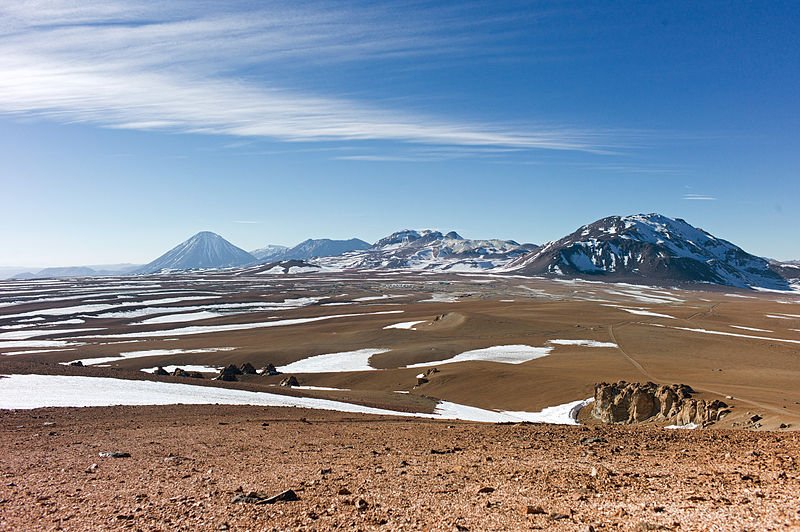 The Licancabur stratovolcano, as reflected on Laguna Verde in Chile
The Licancabur stratovolcano, as reflected on Laguna Verde in ChileSource: https://en.wikipedia.org/wiki/File:Licancabur.jpg
Author: Gerd Breitenbach

Licancabur is a highly symmetrical stratovolcano located on the southernmost part of the border between Chile and Bolivia. The name Licancabur comes from the native Cunza people used to refer to the volcano as well as to themselves. Licancabur is just southwest of Laguna Verde in Bolivia and northwest of Juriques volcano. The summit crater of Licancabur is about 400 m wide. Within Licancabur's crater is a 70 by 90 m crater lake. The lake is ice-covered most of the year. This is one of the highest lakes in the world, and despite air temperatures which can drop to -30°C, it contains planktonic fauna.
Licancabur's most recent volcanic activity produced extensive lava flows which extend 6 km down the northwest and southwest flanks, with older lava flows reaching 15 km and pyroclastic flow deposits as far as 12 km from the peak. Inca ruins have been discovered at the summit, providing proof that the Incas climbed Licancabur, and that there had not been any major eruptions in the last 500 - 1,000 years to erase traces of Inca structures.
 View of the Chajnantor Plateau with Licancabur on the left
View of the Chajnantor Plateau with Licancabur on the leftSource: https://commons.wikimedia.org/wiki/File:ALMA_Dwarfed_by_Mountain_Peaks.jpg
Author: ALMA

 Latest updates on Penang Travel Tips
Latest updates on Penang Travel Tips
About this website

Thanks for reading this page. My name is Timothy Tye. My hobby is to research information about places, and share the information with people on this website. I started this website on 5 January 2003, and since then, have written about over 20,000 places, mostly in Malaysia and Singapore.
Please use the information on this page as guidance only. While I try my best to provide you information that is as accurate as I can get it to be, I do apologize for any errors. Also, as I might not be able to update some information on time, some of these pages may contain outdated information.
Copyright © 2003-2024 Timothy Tye. All Rights Reserved.


 Go Back
Go Back